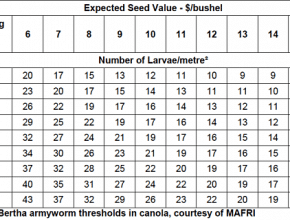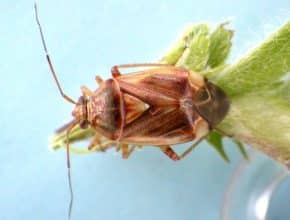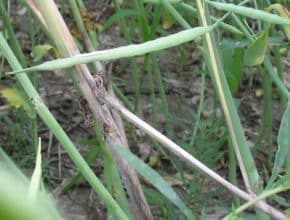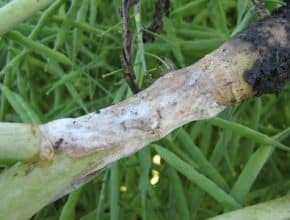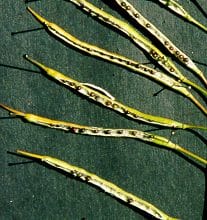Lygus counts and bertha armyworm (shown above) counts are up this week. Saskatchewan and Manitoba growers are encouraged to scout for lygus this year. Lygus has been reported in most areas of Saskatchewan and some parts of Manitoba, as well as in Alberta where lygus tends to be a regular pest. For growers with crop ready to swath, keep in…
August 1, 2012 - Issue 23
-
-
On hot days, bertha armyworms take shelter low in the canopy or on the ground under leaf litter. This is not a good time to scout or spray. Bertha armyworms feed more actively on cooler days and in evenings. This is the time to spray. When scouting, include all worms larger than half an inch long in threshold counts. Smaller…
-
When sweep netting for lygus (shown above), it may seem that there are more lygus in the field than end up in the sweep net. This is expected. Sweep net thresholds were establishing knowing that lygus in the sweep nets represented only a certain percentage of lygus in the canopy. Stick to the thresholds, and follow sweep net techniques outlined…
-
Moisture before and during and following flowering was the biggest factor driving up sclerotinia stem rot infection this year. Moisture as rain or high humidity or dew through the period from two weeks before flowering through early podding has increased the sclerotinia risk considerably, no matter the rotation history of the field. Most regions had these conditions this year. Fungicide…
-
Some regions are reporting higher rates of blackleg (shown above) and most regions are seeing sclerotinia stem rot damage. Fungicide is not effective at this stage of the season, but the weeks leading up to harvest are a good time to scout. Its important to know which disease is present in order to plan rotations and varieties for next year…
-
In fields badly infected with sclerotinia, swath when the healthiest plants are ready. These plants will provide most of the yield. Swathing early will not preserve seeds in badly infected plants — those seeds are unlikely to mature no matter when you swath…
-
When crops are maturing rapidly in hot conditions, swathing before 50-60% seed color change on the main stem may not give chlorophyll time to clear from immature seed. Some fields may require additional moisture — rain — in order to re-hydrate the seed so chlorophyll can clear. If growers feel they must swath at less than 50-60% seed color change…

